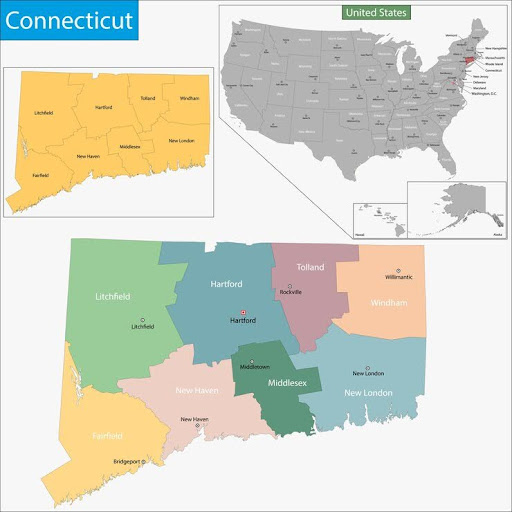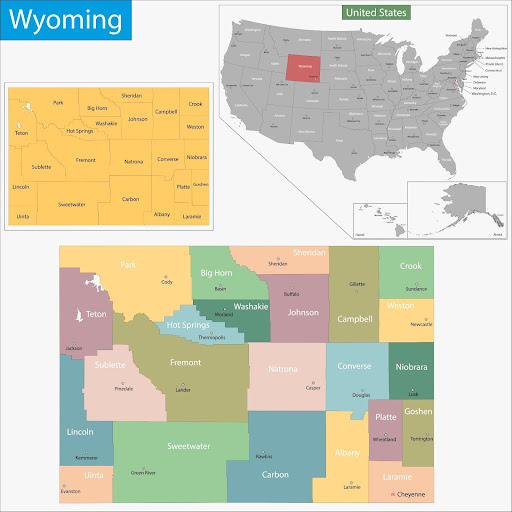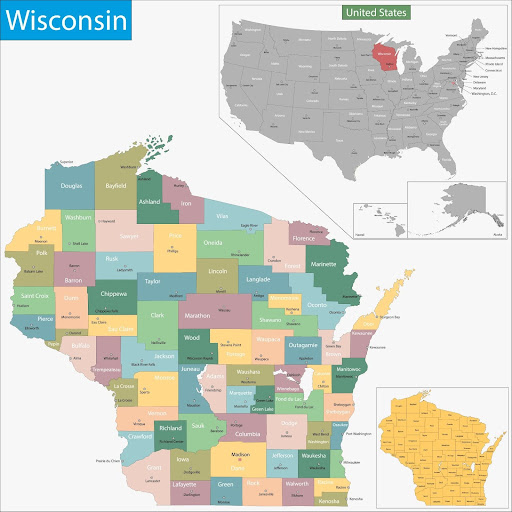Table of Contents
For fire investigators, the challenge in Connecticut lies not in vast wilderness, but in complexity: narrow access roads, fast-evolving fuel beds, overlapping jurisdictions, and a growing Wildland-Urban Interface (WUI). A debris burn gone wrong in Windham County can look very different from a structure-adjacent ignition in Fairfield, and both demand keen scene reconstruction and agency coordination.
This guide offers a deep dive into wildland fire resources in Connecticut with a focus on what matters most to fire investigators: incident patterns, response assets, agency collaboration, and where to turn when time and accuracy are critical.
Live Incident Updates & Maps
When active fire behavior is unfolding, especially in densely populated areas, investigators, responders, and dispatchers all depend on up-to-the-minute data. Monitor wildfire activity across Connecticut with this live incident tracker.
State Overview
Connecticut’s fire behavior is shaped more by fragmentation than by vastness. Over 60% of the state is forested, more than 1.8 million acres, and much of that sits within striking distance of homes, roads, and commercial corridors.
- Eastern Connecticut features pitch pine and oak forests prone to surface fires, particularly during dry spring conditions.
- Western Litchfield County is hillier, with deep duff layers, making mop-up and rekindle prevention more intensive.
- Southern counties, including New Haven and Fairfield, present classic WUI risks: scattered wooded lots, aging utilities, and backyard burn practices.
The Connecticut Department of Energy and Environmental Protection (DEEP) manages statewide fire protection on forested state lands and private property under its jurisdiction. Wildfire investigations here tend to revolve around human causes like debris burns, equipment use, and arson, often layered with jurisdictional complexity.
Wildfire Season Timeline
Connecticut experiences a shorter but still critical wildfire season, generally concentrated in the spring:
- Spring Season (March–May): The most active time. Before leaf-out, dormant vegetation and dry duff layers act as surface fuels. Windy conditions and low humidity increase the risk of fast-moving ground fires. Most DEEP deployments and burn bans occur during this window.
- Fall Season (October–November): A second, smaller peak may occur after leaf drop, especially during prolonged drought conditions. Fires are often caused by humans, frequently by debris burning or equipment use.
Investigators should consider wind history, local suppression response timelines, and recent burn permit data when reconstructing scene origins during these high-risk periods.
Key State Agencies Involved
- Connecticut Department of Energy and Environmental Protection (DEEP) – Forestry Division: DEEP is the lead state agency for forest fire control. They handle detection, suppression, burn permitting, and investigation on both public and private forest lands. The division operates five wildfire response districts and maintains a 24-hour dispatch system for incident coordination. Investigators often work alongside DEEP forest fire personnel during origin and cause assessments.
- Connecticut Fire Academy (CFA): CFA provides firefighter training statewide, including NWCG-aligned wildland coursework. For fire investigators seeking cross-training or certification (such as S-130/190 or FI-210), CFA is the primary in-state provider.
- U.S. Forest Service (USFS): Although Connecticut has no national forests, the USFS supports the state through the Northeastern Area State and Private Forestry program. Their role in Connecticut is advisory and supportive, particularly during high-complexity incidents or large-scale mutual aid mobilizations. USFS protocols apply if federal resources are activated under the Compact system.
Local Wildland Firefighting Resources
Much of Connecticut’s wildland suppression capacity comes from municipal and volunteer fire departments, supported by DEEP during larger or rural incidents.
List of Local/State/Federal Fire Response Agencies
Here’s a look at the local, state, and federal agencies that work together to respond to wildland fires.
- DEEP Forest Fire Crews: Equipped with Type 6 engines, bulldozers, and UTVs, these teams support initial and extended attack operations, often in tandem with local VFDs.
- Volunteer Fire Departments (VFDs): More than 200 VFDs serve towns across the state. Most handle initial attack and often maintain wildland equipment such as brush trucks and slip-on units.
- Connecticut Fire Academy (CFA): Statewide firefighter training, including wildland modules.
- Mutual Aid Compacts: The Connecticut Interstate Fire Crew (CIFC) supports large-scale deployments both in-state and out-of-state. CIFC members are red-carded and trained under NWCG standards.
- U.S. Forest Service (Support role): May assist under mutual aid or Compact resource-sharing.
Contact Numbers and Emergency Links
- Report a Wildfire: Call 911 or DEEP Forest Fire Control at 860-424-3333
- DEEP Forest Fire Control: portal.ct.gov/DEEP/Forestry/Forest-Fire
- Connecticut Fire Academy: portal.ct.gov/CFPC
- Northeast Forest Fire Protection Compact: nffpc.org
Training & Volunteering
Wildland fire training in Connecticut is expanding, thanks to increasing WUI threats and interagency deployments.
NWCG-Approved Academies and Centers
Connecticut Fire Academy offers key NWCG courses, including:
- S-130/S-190/L-180: Required for red card qualification. Delivered in both classroom and hybrid formats, often with practical field days hosted in cooperation with local fire departments.
- FI-210 – Wildland Fire Origin & Cause Determination: Offered periodically through CFA or in partnership with the Northeast Compact. Covers investigative protocols, legal procedures, and evidence handling.
Volunteer and Seasonal Training Opportunities
There are plenty of opportunities throughout the state for those who want to volunteer or work as seasonal firefighters.
- Connecticut Interstate Fire Crew (CIFC): Accepts volunteers who complete NWCG training. Members deploy on incidents both in-state and nationally.
- Local VFD Training Programs: Many departments offer wildland modules through DEEP or CFA. Fire investigators benefit from understanding their operational baseline, as these crews often provide initial scene narratives.
- DEEP Seasonal Hiring: DEEP hires seasonal firefighters for suppression support during peak fire months. These personnel may assist in mop-up, patrol, and scene security, roles that intersect frequently with investigators.
Stay Updated About Connecticut’s Wildland Fire Landscape
Connecticut may be small, but its fire landscape is evolving quickly. Increasing drought frequency, aging infrastructure, and growing WUI zones mean more ignitions, more complexity, and a greater need for trained investigation personnel.
From DEEP’s dispatch systems to the Connecticut Fire Academy’s NWCG pipeline, understanding how the state equips, trains, and deploys its suppression assets will make your job as an investigator more precise, efficient, and impactful.
Monitor seasonal outlooks, track training updates through the Compact, and don’t underestimate the role of local VFDs. They may hold the earliest and most crucial information from the scene.
FAQs
How do I report a wildfire in Connecticut?
Call 911 immediately. You can also contact DEEP Forest Fire Control at 860-424-3333 for fires on public or private forested lands.
Can I conduct a controlled burn in Connecticut?
Yes, but you must obtain a permit. DEEP regulates open burning and may suspend permits during dry conditions. Contact your local fire marshal or visit DEEP’s open burning page for current rules.
Who investigates wildfires in Connecticut?
Investigations may be led by DEEP Forest Fire Control, local fire marshals, or, depending on jurisdiction, law enforcement. Coordination between DEEP, local VFDs, and CFA-trained personnel is common during cause and origin investigations.










